Santa Fe Indian Market: Art as Living Inheritance

Gabriella Marks, GMarks Photo
Loading the Elevenlabs Text to Speech AudioNative Player...
For many, the SWAIA Indian Market is Santa Fe’s most anticipated event of the year. Every August, over 1,000 celebrated artists from more than 200 communities, tribes, and nations gather in The City Different for the three-day event. This year marked the 103rd market, centered around the theme Iconic Beginnings: Legacies in Motion. SWAIA, the Southwest Association for Indian Arts, is an organization dedicated to supporting and creating economic opportunities for Native artists. What began as a small market and art fair in 1922 has now become the largest Native art show in the world.
On Friday, August 15th, The Market weekend kicked off with the Best of Show presentation in the morning. Artists of all disciplines were presented with awards and accolades for their craftsmanship and mastery of technique. Following the award ceremony, SWAIA members were given a preview of art pieces before they were shown to the public that evening. Art collectors from all over the world gathered throughout the weekend to purchase pieces and connect with their favorite artists.

There were over twenty artists awarded accolades for their work. The overall Best of Show award was given to Chickasaw artist Regina Free, for her life sized sculpture of a Bison, titled Windswept.
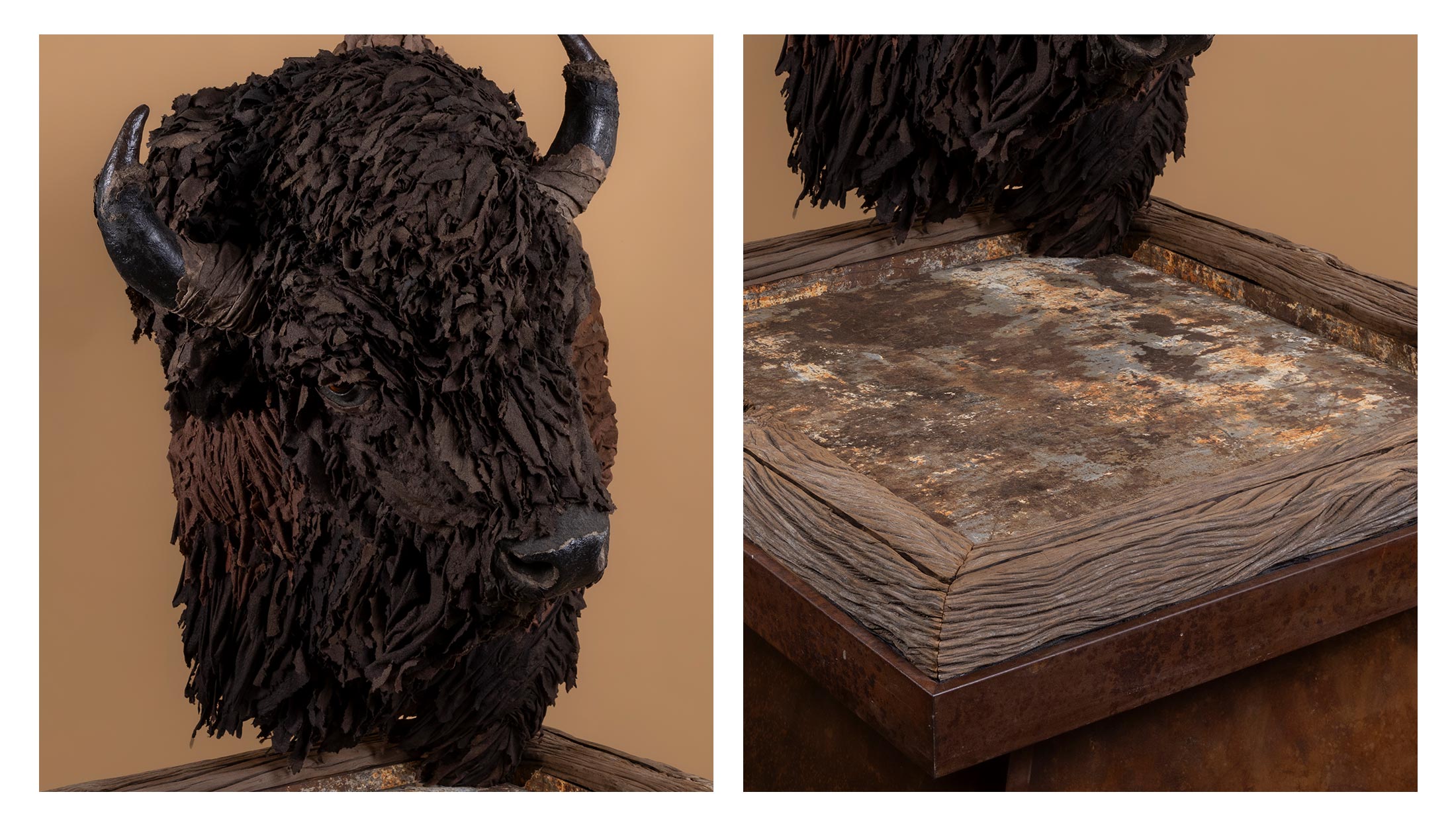
Saturday and Sunday, the streets of downtown Santa Fe were packed with booths, where artists displayed fine jewelry, original paintings, pottery made with traditional techniques, and handwoven textiles. Often, many artists spend all year creating pieces for the market and make their annual income over the course of the three-day market weekend.
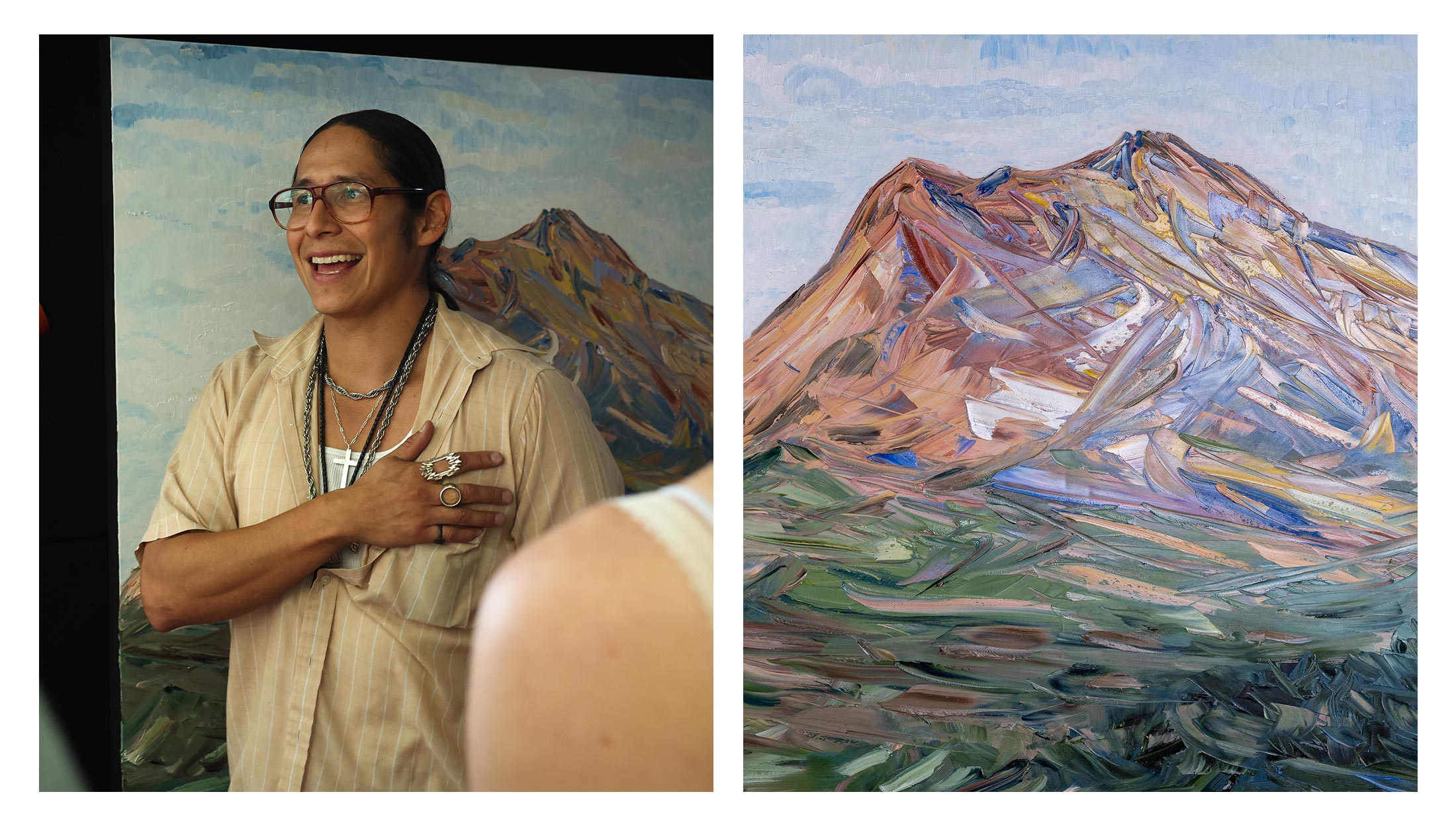
The Saturday and Sunday market events were free and open to the public, facilitating a vibrant environment where groups of people gathered to walk through the market, eat, and enjoy entertainment in the Plaza.
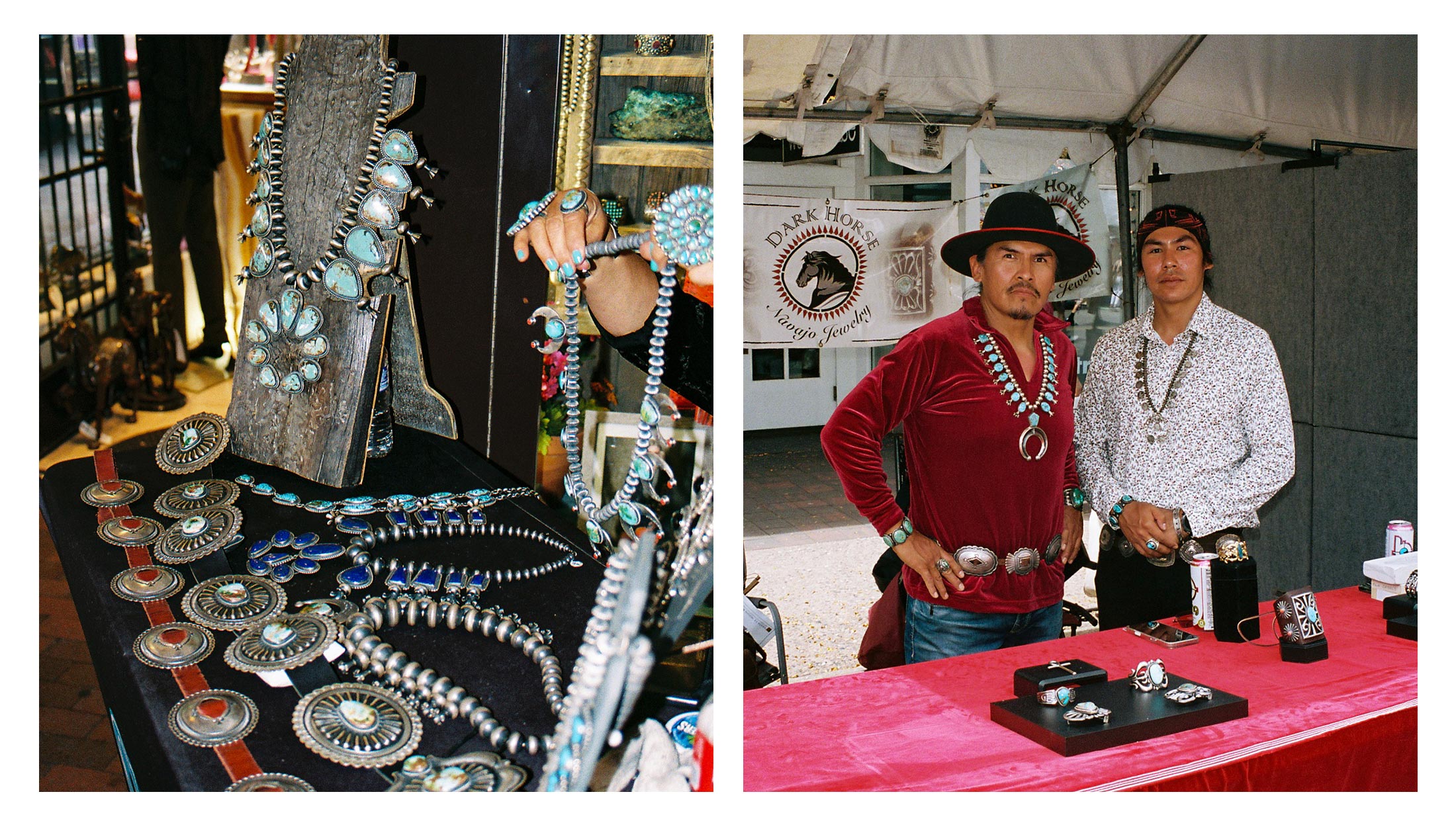
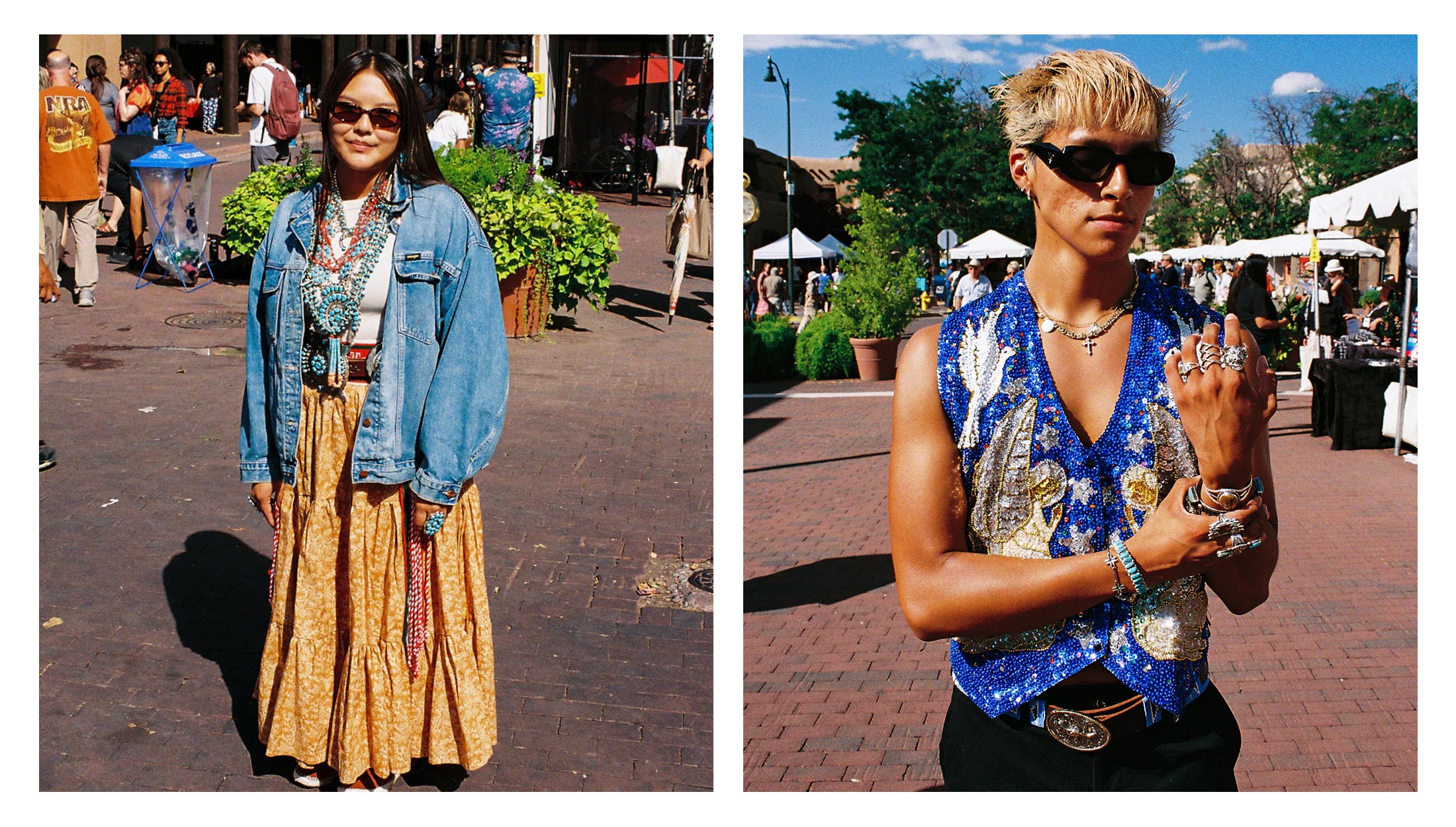
Saturday evening, SWAIA hosted a ticketed gala event, where artists’ works were displayed and auctioned, patrons enjoyed a meal in traditional Feast Day style, and Patricia Michaels of PM Waterlily presented her latest runway collection.
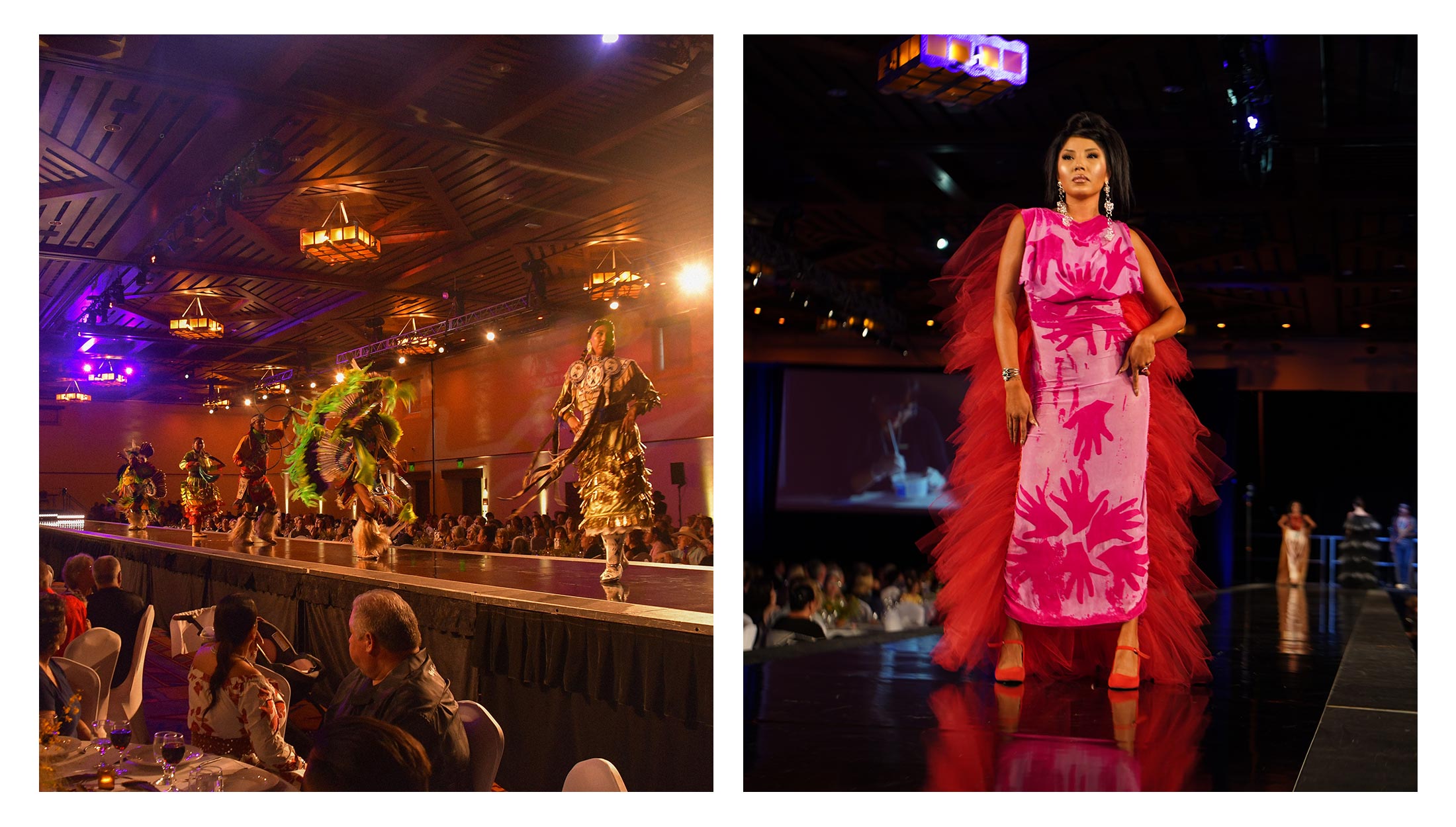
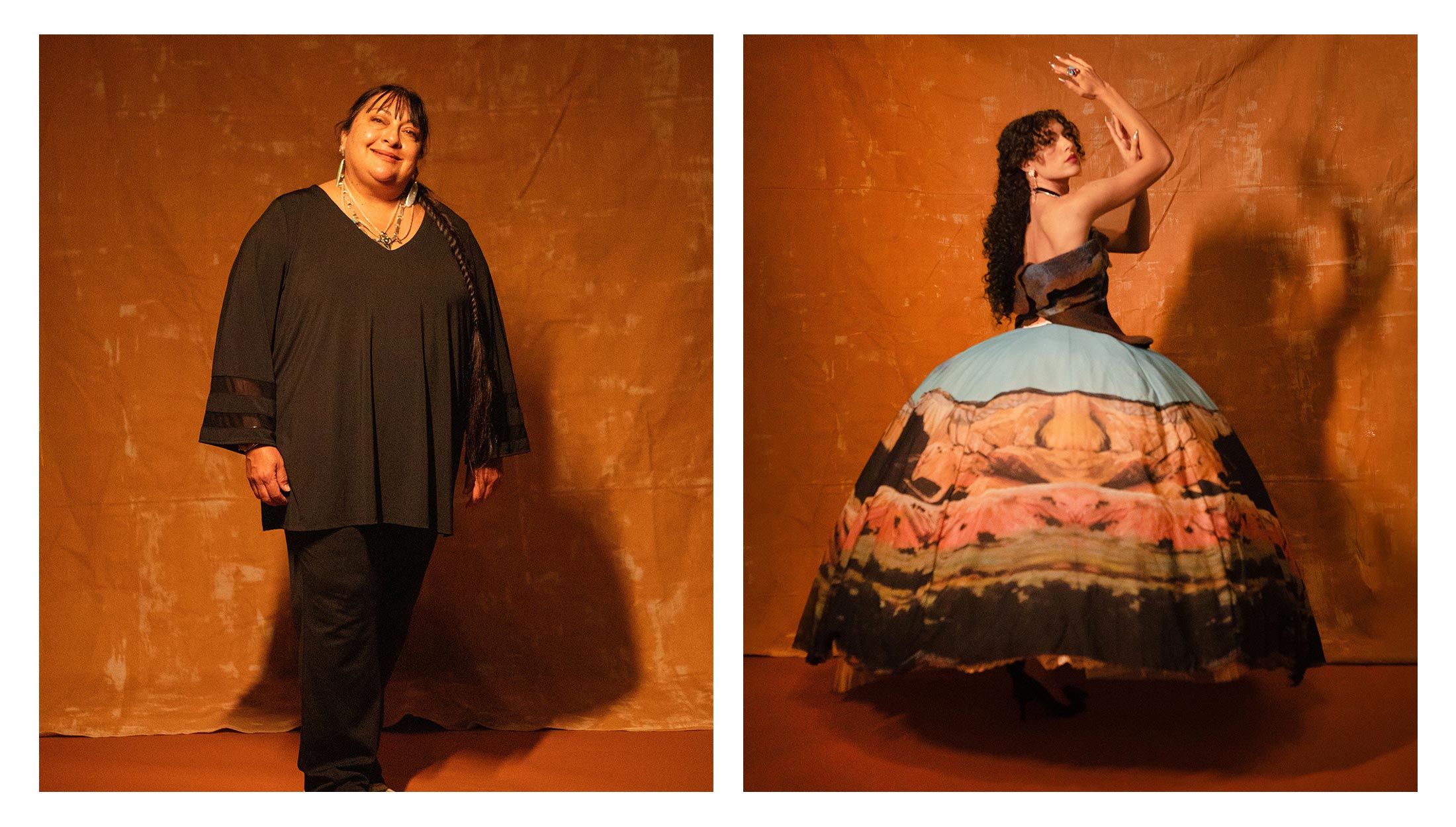
As for Iconic Beginnings, the market location itself is imbued with significant history. Downtown Santa Fe, now filled with booths showcasing Native artistry, was once the site of the Pueblo Revolt. On August 10th of 1680, Pueblo peoples, led by Po’Pay of Ohkay Owingeh, launched an uprising against the brutal Spanish occupation, successfully expelling the Spanish stronghold from the region. The revolt culminated in the Santa Fe Plaza, where Indigenous artists now gather annually to celebrate and preserve cultural expression that once faced the threat of erasure. Although the Spanish returned twelve years after the uprising, the revolt fundamentally changed the relationship between the Spanish and the Pueblos. It set a lasting precedent for Pueblo sovereignty and helped ensure the survival of the people, culture, and way of life.
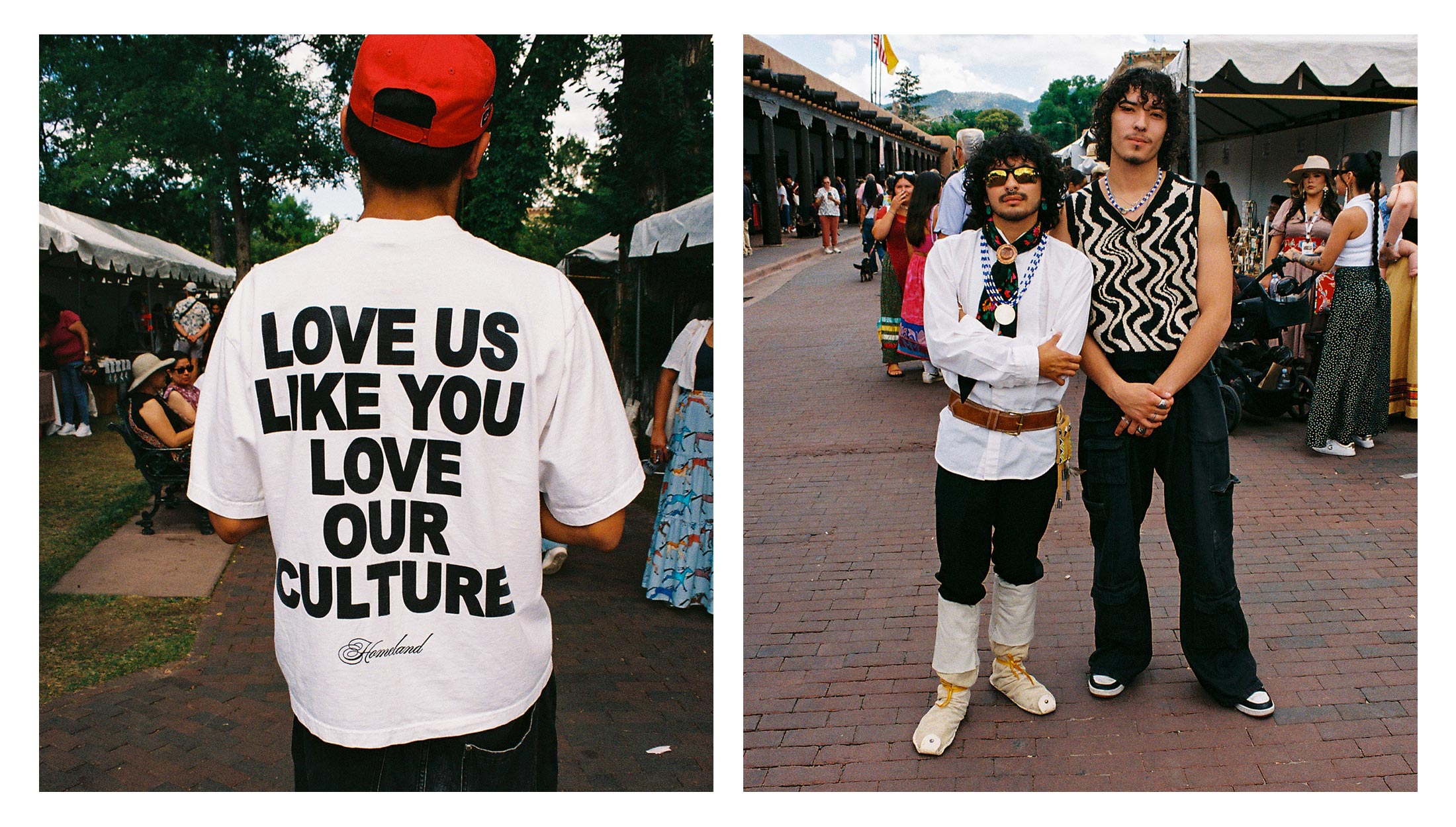
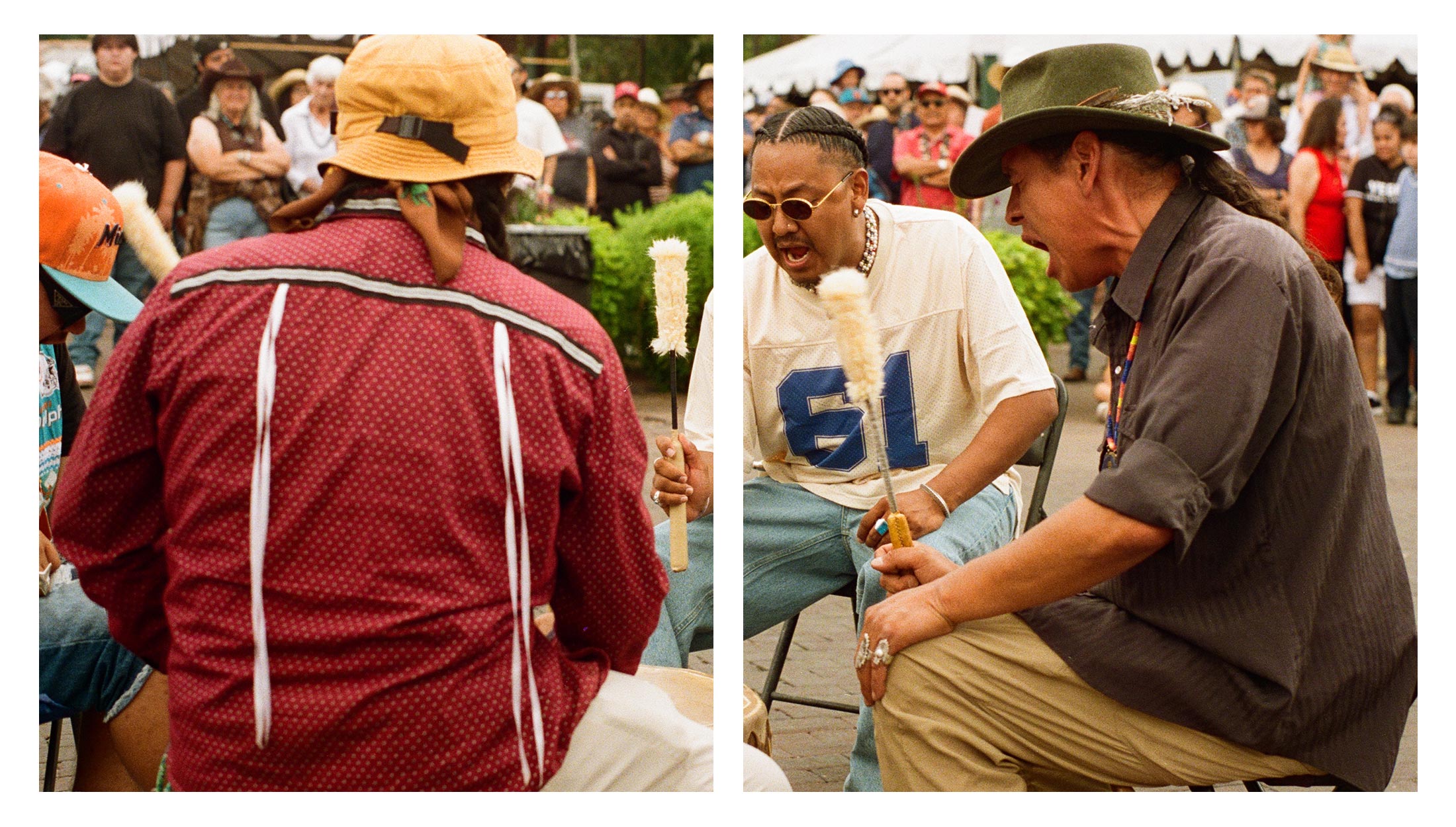
Throughout the weekend, I had the honor of speaking with many artists from various disciplines. One such artist, Mozart Gabriel Abeyta of Taos Pueblo, has a long history with the Santa Fe Indian Market. The son of world renown fashion designer Patricia Michaels and painter Tony Abeyta, Gabriel has been surrounded by art his entire life. Now an artist himself, Gabriel has carved out his place as both a painter and a rock musician.
Gabriel’s iconic beginning was at The Matador, a dive bar in downtown Santa Fe. “The Matador was my first gallery,” stated Abeyta in an interview, “I learned a lot there about the world, about politics, about art. I sold my first paintings down there.”
On Thursday evening, Abeyta, known professionally as Ugly Pie Art, presented an eclectic exhibition at the Blue Rain Gallery in the Santa Fe Railyard District. The exhibition featured a collection of new paintings, many of which sold well before the end of the evening. Ugly Pie’s art reflects a surreal atmosphere, capturing the eye with a combination of an earthen color palette and bright hues. His subjects vary from landscapes to people, sometimes colliding together into a hybrid of both. “A lot of my work is dedicated to my mother, who taught me about the power of storytelling,” stated Abeyta, “In Taos Pueblo, we don’t give out our secrets, but innovate and physically create our stories to pass down knowledge to the younger generations.”
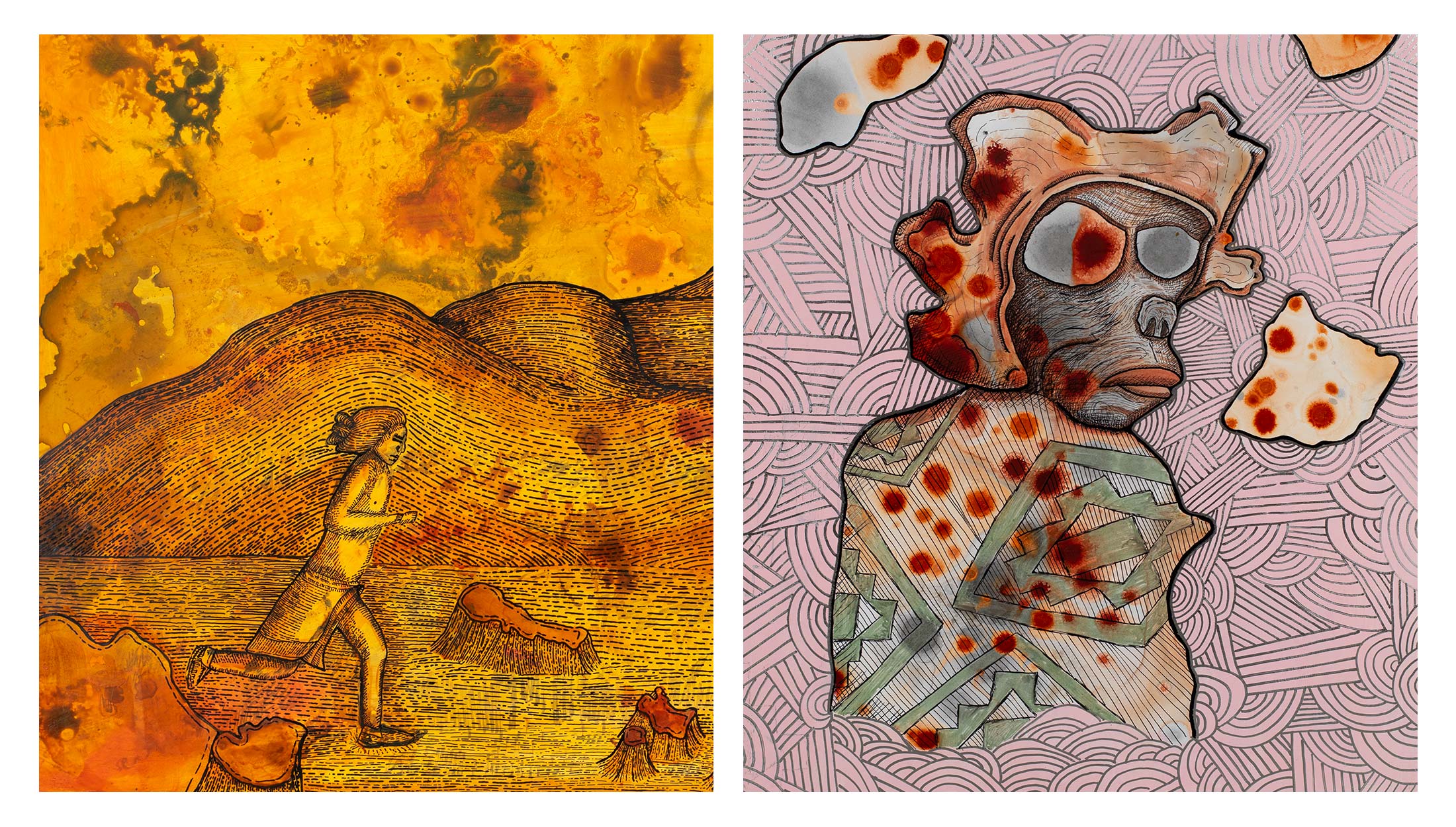
“This body of work is really an appreciation of my mother and her showing me so much, teaching me how to tell a story with my work. I use some techniques I learned from my mother, specifically her famous ‘bleeding ink’ technique. I incorporate it as an ode to my mother’s work.”
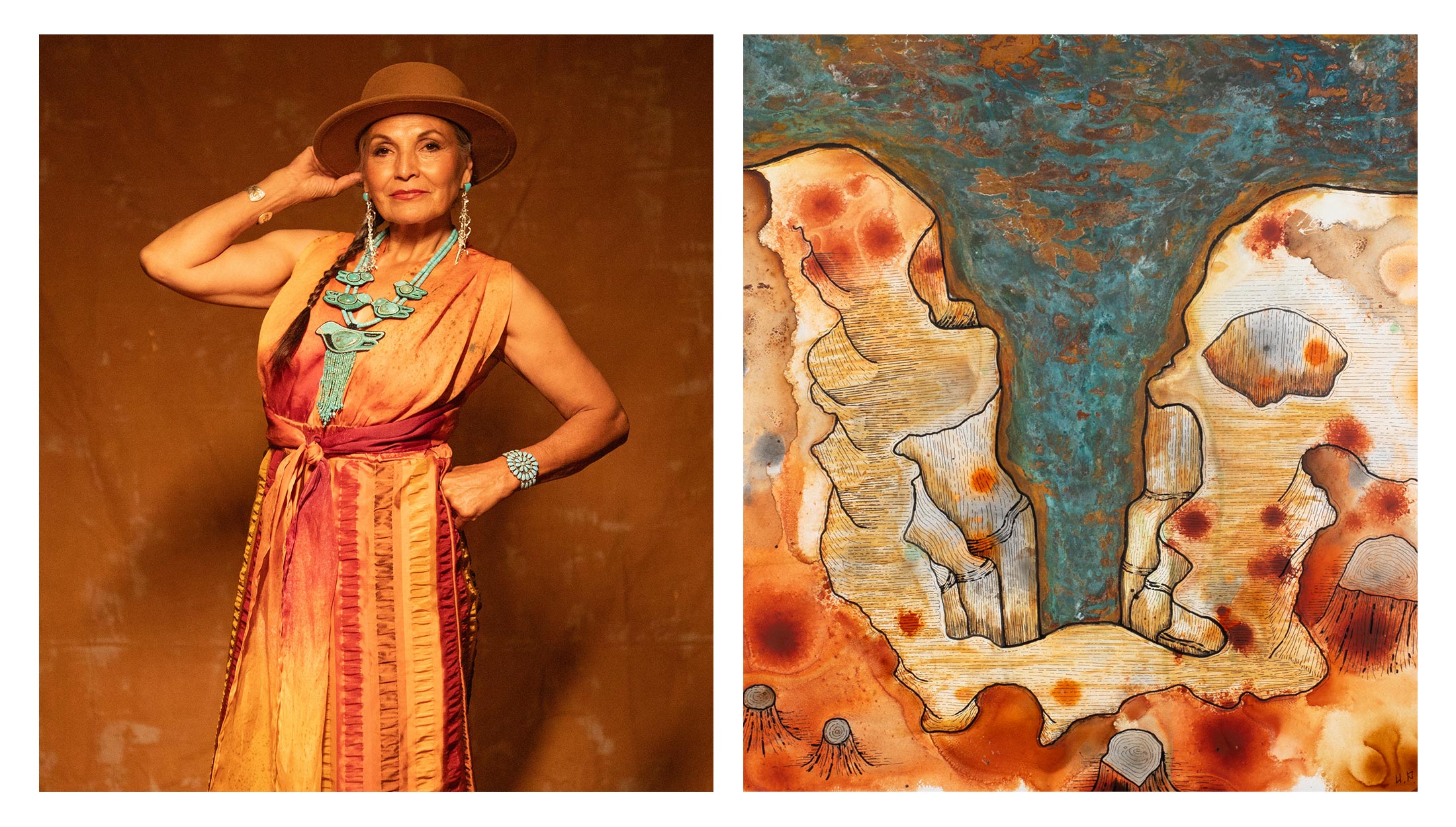
When I asked how he would like people to respond to his work, Abeyta replied, “I want them to feel the honesty, vulnerability, and that there is no shame in loving themselves and knowing that we are all equal. It’s about coming to peace with the past. I actually spoke about this with my mother, a lot of the pieces are based on real photographs. Many pieces represent moments in my life, in her life, and I want the viewer to not forget what a picture really means. It isn't just as simple as a selfie. It’s valuable, it’s a documentation of a moment in time, a memory.”
Currently based in Nashville, Mozart Gabriel Abeyta is also pursuing music and is working to promote the presence of Native Rock musicians, particularly with the Native Guitars Tour.
Jericho (Warm Springs and Aaniih) is an emerging designer out of Montana. He made his SWAIA Indian Market runway debut on Friday evening. Towering Stone, a men’s fashion house founded in Acoma Pueblo, hosted a runway showcase titled Sovereignly Fit at the historic La Fonda Hotel. Jericho presented his collection alongside eight other designers.
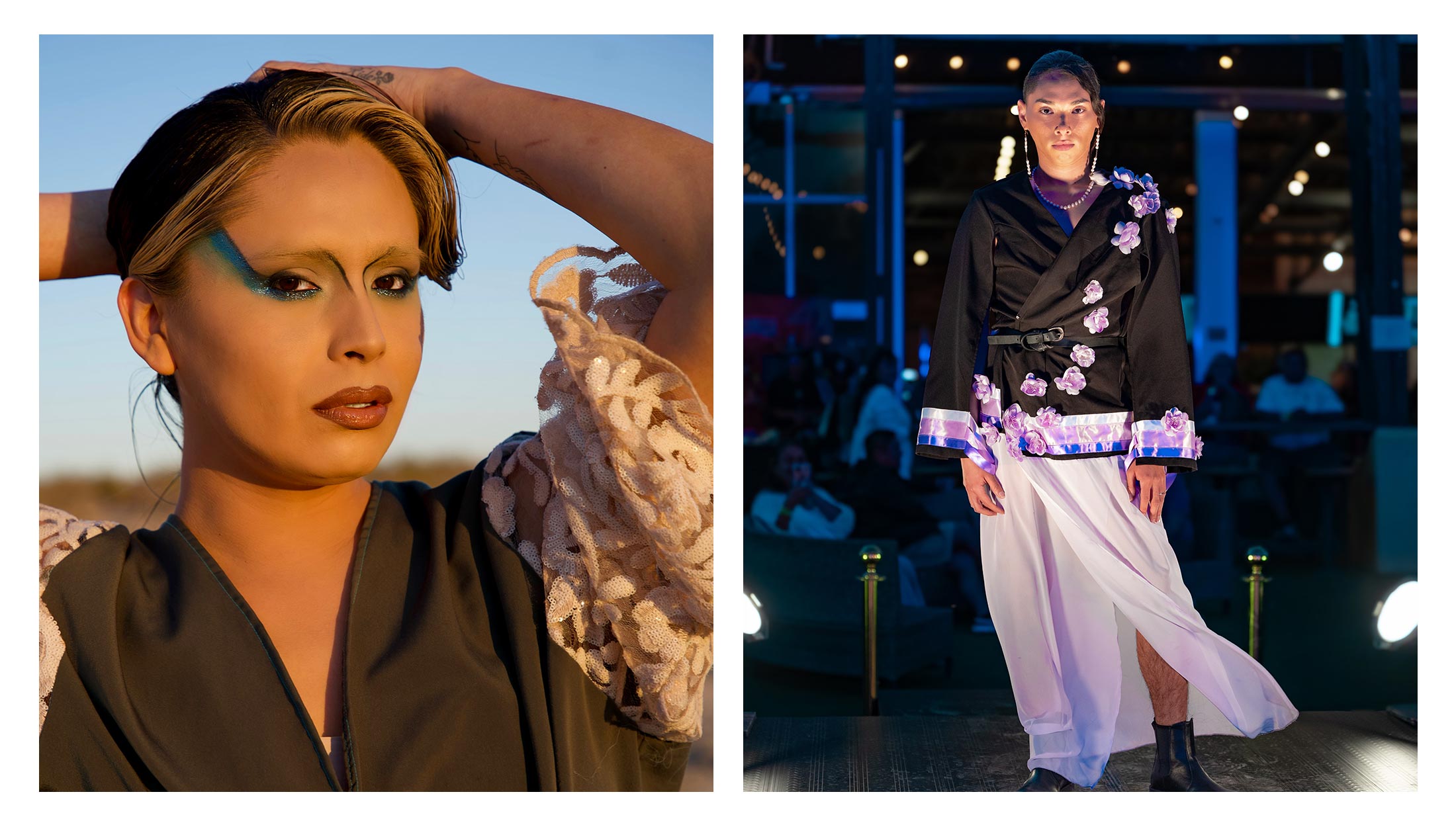
“I attended the Indian Market when I was a kid, but this is my first time here as an artist,” stated Jericho during a brief interview. “Growing up, I always dressed differently, and I was always into clothes. I began taking sewing and fashion classes while I was in high school, then I had the chance to intern with Teresa Romero, a designer in Albuquerque. From there, I created my own brand, Jericho.”
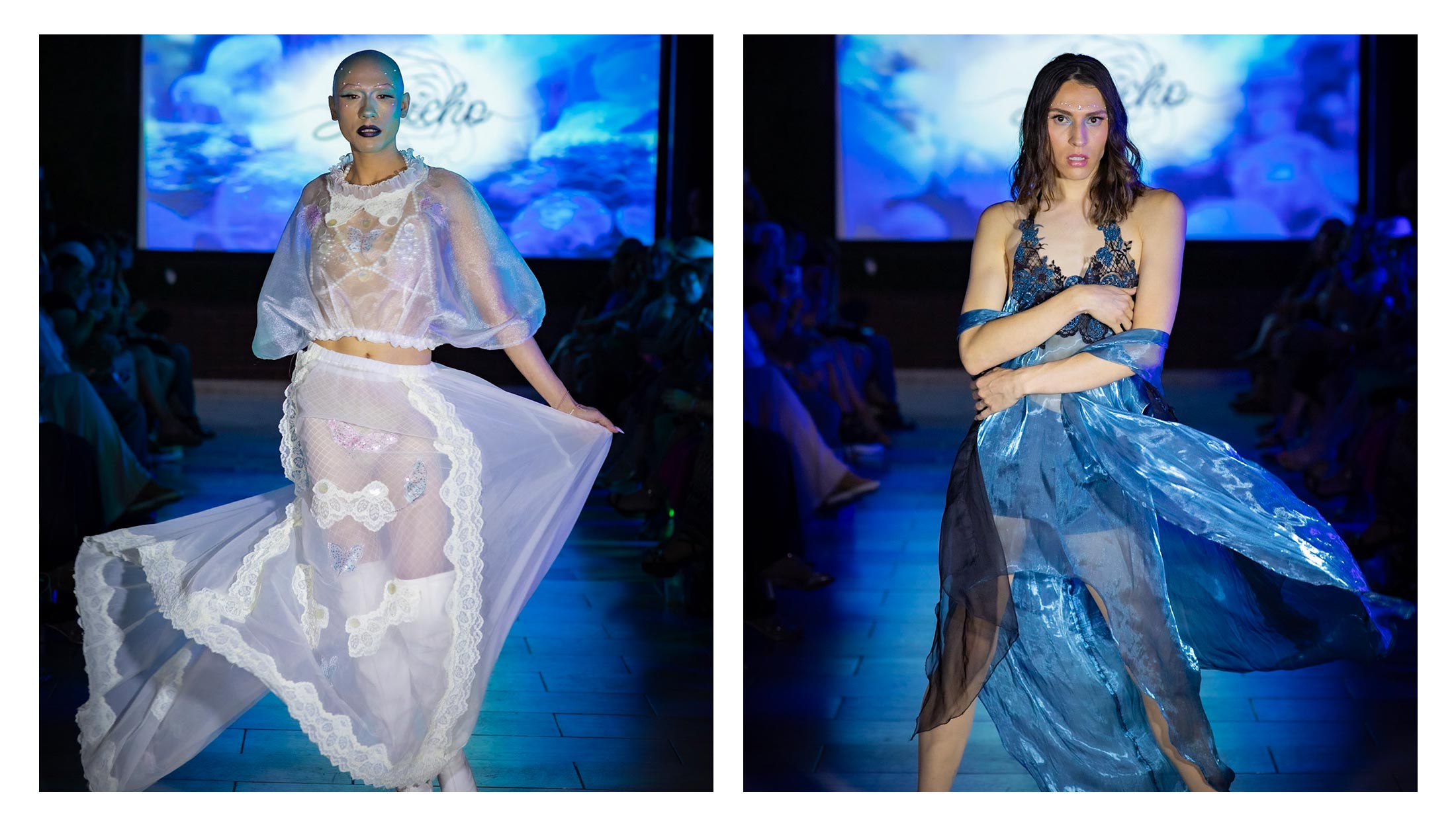
“Being Native American myself, I didn’t necessarily want to design native clothes. I had someone tell me that to be a native designer I don’t have to design native clothes, I can be a native person who designs clothes. That really resonated with me.” Jericho’s designs are unique and recognizable. His use of 1960s and 1970s silhouettes, a largely pastel color palette, gender fluidity, and delicate fabrics draw the viewer into an ethereal dreamscape.
“From what I’ve seen, everything seems to have changed over these last few years. Natives used to be put in the background. Many designers have stolen from native artists and not credited us. Now I see that narrative changing. We have social media, and we have more control over our own media coverage.”
Though based in Montana, Jericho often returns to New Mexico to present in fashion events. His next stop is Estes Park, Colorado, where he’ll be participating in the First People’s Fashion Show in January 2026.
The market came to a close on Sunday evening with the SWAIA Native Fashion Show, featuring designers Jamie Okuma, Penny Singer, Lauren Good Day, Osamuskwasis and Jontay Kahm. The designers presented innovative collections, and the audience fell silent as the final model for Jamie Okuma stepped onto the runway, wearing a gown made from dentalium shells.
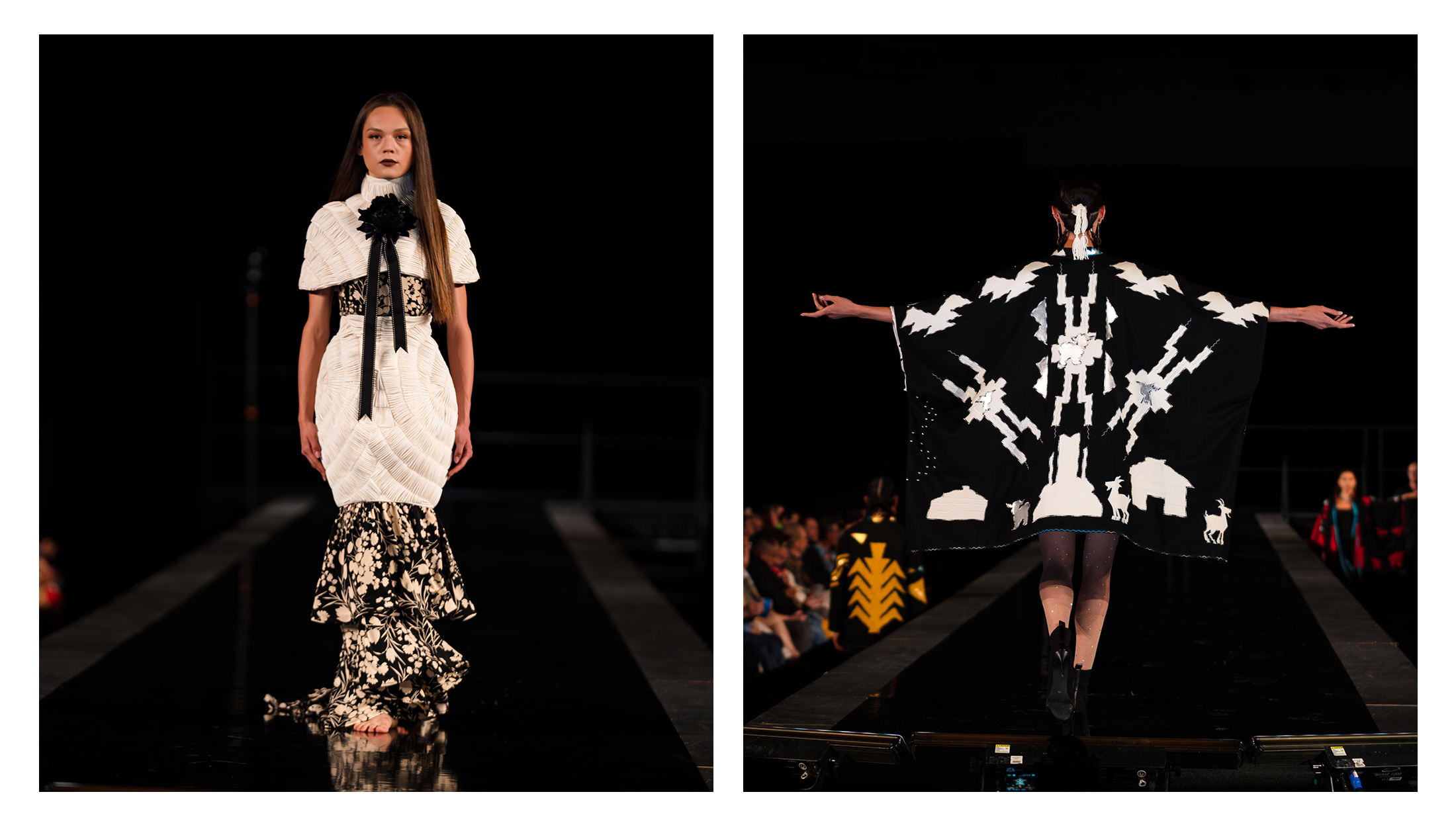
As the Santa Fe Indian Market enters its second century, its role in the global art world and in Native communities continues to evolve. What began as a modest gathering has become a vital platform for economic empowerment and cultural preservation. For artists and attendees alike, the market remains a rare opportunity to connect, celebrate, and support Indigenous creativity on a world stage. Here, art is passed on, renewed, and honored as a living inheritance, carrying stories and traditions into the future.
Madeleine Granath is a feature writer for Ode, with a focus on Santa Fe, where the arts flourish against a backdrop of stunning desert landscapes and rich Southwestern heritage. Follow her on Instagram or explore her previous coverage of SWAIA Native Fashion Week.
On Friday, August 15th, The Market weekend kicked off with the Best of Show presentation in the morning. Artists of all disciplines were presented with awards and accolades for their craftsmanship and mastery of technique. Following the award ceremony, SWAIA members were given a preview of art pieces before they were shown to the public that evening. Art collectors from all over the world gathered throughout the weekend to purchase pieces and connect with their favorite artists.

Photo Credit: Gabriella Marks, GMarks Photo
There were over twenty artists awarded accolades for their work. The overall Best of Show award was given to Chickasaw artist Regina Free, for her life sized sculpture of a Bison, titled Windswept.

Photo Credit: Gabriella Marks, GMarks Photo
Saturday and Sunday, the streets of downtown Santa Fe were packed with booths, where artists displayed fine jewelry, original paintings, pottery made with traditional techniques, and handwoven textiles. Often, many artists spend all year creating pieces for the market and make their annual income over the course of the three-day market weekend.

Photo Credit: Kaela Waldstein (Left), Gabriella Marks, GMarks Photo (Right)
The Saturday and Sunday market events were free and open to the public, facilitating a vibrant environment where groups of people gathered to walk through the market, eat, and enjoy entertainment in the Plaza.

Photo Credit: Dominic Pablo

Photo Credit: Dominic Pablo
Saturday evening, SWAIA hosted a ticketed gala event, where artists’ works were displayed and auctioned, patrons enjoyed a meal in traditional Feast Day style, and Patricia Michaels of PM Waterlily presented her latest runway collection.

Photo Credit: Charles Montoya

Photo Credit: Nate Lemuel
As for Iconic Beginnings, the market location itself is imbued with significant history. Downtown Santa Fe, now filled with booths showcasing Native artistry, was once the site of the Pueblo Revolt. On August 10th of 1680, Pueblo peoples, led by Po’Pay of Ohkay Owingeh, launched an uprising against the brutal Spanish occupation, successfully expelling the Spanish stronghold from the region. The revolt culminated in the Santa Fe Plaza, where Indigenous artists now gather annually to celebrate and preserve cultural expression that once faced the threat of erasure. Although the Spanish returned twelve years after the uprising, the revolt fundamentally changed the relationship between the Spanish and the Pueblos. It set a lasting precedent for Pueblo sovereignty and helped ensure the survival of the people, culture, and way of life.

Photo Credit: Dominic Pablo

Photo Credit: Charles Montoya
***
Throughout the weekend, I had the honor of speaking with many artists from various disciplines. One such artist, Mozart Gabriel Abeyta of Taos Pueblo, has a long history with the Santa Fe Indian Market. The son of world renown fashion designer Patricia Michaels and painter Tony Abeyta, Gabriel has been surrounded by art his entire life. Now an artist himself, Gabriel has carved out his place as both a painter and a rock musician.
Gabriel’s iconic beginning was at The Matador, a dive bar in downtown Santa Fe. “The Matador was my first gallery,” stated Abeyta in an interview, “I learned a lot there about the world, about politics, about art. I sold my first paintings down there.”
On Thursday evening, Abeyta, known professionally as Ugly Pie Art, presented an eclectic exhibition at the Blue Rain Gallery in the Santa Fe Railyard District. The exhibition featured a collection of new paintings, many of which sold well before the end of the evening. Ugly Pie’s art reflects a surreal atmosphere, capturing the eye with a combination of an earthen color palette and bright hues. His subjects vary from landscapes to people, sometimes colliding together into a hybrid of both. “A lot of my work is dedicated to my mother, who taught me about the power of storytelling,” stated Abeyta, “In Taos Pueblo, we don’t give out our secrets, but innovate and physically create our stories to pass down knowledge to the younger generations.”

Photo Credit: Blue Rain Gallery
“This body of work is really an appreciation of my mother and her showing me so much, teaching me how to tell a story with my work. I use some techniques I learned from my mother, specifically her famous ‘bleeding ink’ technique. I incorporate it as an ode to my mother’s work.”

Photo Credit: Nate Lemuel (Left), Blue Rain Gallery (Right)
When I asked how he would like people to respond to his work, Abeyta replied, “I want them to feel the honesty, vulnerability, and that there is no shame in loving themselves and knowing that we are all equal. It’s about coming to peace with the past. I actually spoke about this with my mother, a lot of the pieces are based on real photographs. Many pieces represent moments in my life, in her life, and I want the viewer to not forget what a picture really means. It isn't just as simple as a selfie. It’s valuable, it’s a documentation of a moment in time, a memory.”
Currently based in Nashville, Mozart Gabriel Abeyta is also pursuing music and is working to promote the presence of Native Rock musicians, particularly with the Native Guitars Tour.
***
Jericho (Warm Springs and Aaniih) is an emerging designer out of Montana. He made his SWAIA Indian Market runway debut on Friday evening. Towering Stone, a men’s fashion house founded in Acoma Pueblo, hosted a runway showcase titled Sovereignly Fit at the historic La Fonda Hotel. Jericho presented his collection alongside eight other designers.

Photo Credit: Jericho
“I attended the Indian Market when I was a kid, but this is my first time here as an artist,” stated Jericho during a brief interview. “Growing up, I always dressed differently, and I was always into clothes. I began taking sewing and fashion classes while I was in high school, then I had the chance to intern with Teresa Romero, a designer in Albuquerque. From there, I created my own brand, Jericho.”

Photo Credit: Jericho
“Being Native American myself, I didn’t necessarily want to design native clothes. I had someone tell me that to be a native designer I don’t have to design native clothes, I can be a native person who designs clothes. That really resonated with me.” Jericho’s designs are unique and recognizable. His use of 1960s and 1970s silhouettes, a largely pastel color palette, gender fluidity, and delicate fabrics draw the viewer into an ethereal dreamscape.
“From what I’ve seen, everything seems to have changed over these last few years. Natives used to be put in the background. Many designers have stolen from native artists and not credited us. Now I see that narrative changing. We have social media, and we have more control over our own media coverage.”
Though based in Montana, Jericho often returns to New Mexico to present in fashion events. His next stop is Estes Park, Colorado, where he’ll be participating in the First People’s Fashion Show in January 2026.
***
The market came to a close on Sunday evening with the SWAIA Native Fashion Show, featuring designers Jamie Okuma, Penny Singer, Lauren Good Day, Osamuskwasis and Jontay Kahm. The designers presented innovative collections, and the audience fell silent as the final model for Jamie Okuma stepped onto the runway, wearing a gown made from dentalium shells.

Photo Credit: Vii Rose
As the Santa Fe Indian Market enters its second century, its role in the global art world and in Native communities continues to evolve. What began as a modest gathering has become a vital platform for economic empowerment and cultural preservation. For artists and attendees alike, the market remains a rare opportunity to connect, celebrate, and support Indigenous creativity on a world stage. Here, art is passed on, renewed, and honored as a living inheritance, carrying stories and traditions into the future.
***
Madeleine Granath is a feature writer for Ode, with a focus on Santa Fe, where the arts flourish against a backdrop of stunning desert landscapes and rich Southwestern heritage. Follow her on Instagram or explore her previous coverage of SWAIA Native Fashion Week.
Join the Club
Follow the organizations you care about, track and bookmark events as they're announced—discover your next enriching experience on Ode.
